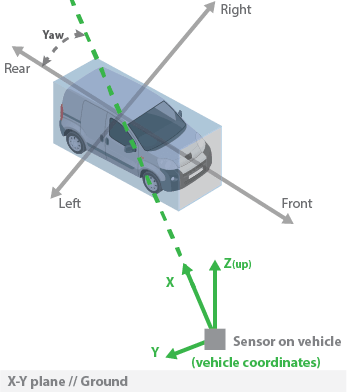projectedCuboidTo3D
Syntax
Description
cuboid = projectedCuboidTo3D(projectedCuboid,worldHeight,monoCam)projectedCuboid,
the height data of the objects contained in the projected cuboids
worldHeight, and the camera parameters for the sensor that collected
the images monoCam.
Examples
Input Arguments
Output Arguments
Version History
Introduced in R2022b
